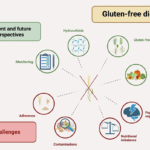In today’s hyperconnected digital ecosystem, where data breaches and regulatory demands dominate headlines, a new concept is reshaping how businesses safeguard their operations: Corpenpelloz. Though unfamiliar to many, this term is rapidly gaining traction as organizations prioritize secure identity verification and compliance in an era of remote work, AI-driven threats, and evolving privacy laws. This deep dive unpacks Corpenpelloz’s role in modern corporate strategy, its real-world applications, and actionable steps for implementation.
Decoding Corpenpelloz: Bridging Security and Corporate Agility
What Exactly is Corpenpelloz?
Corpenpelloz merges corporate identity management with advanced technological frameworks to create secure, compliant ecosystems for data sharing and stakeholder verification. Think of it as a digital gatekeeper—ensuring only authorized users access sensitive systems while streamlining compliance with global regulations like GDPR, HIPAA, and CCPA. Unlike traditional identity management, Corpenpelloz emphasizes proactive security, integrating real-time analytics, automation, and decentralized architectures to preempt breaches and simplify compliance.
The Name’s Origin: More Than a Portmanteau
The term blends “corporate” with a nod to “pellucere” (Latin for “to clarify”), symbolizing its mission to bring transparency and efficiency to identity processes. It reflects a shift from fragmented security measures to unified, tech-driven solutions. This linguistic fusion underscores its core purpose: demystifying identity management while fortifying corporate ecosystems against modern threats.
Why Corpenpelloz Matters Now
- Regulatory Survival Kit
Non-compliance penalties hit record highs in recent years, with GDPR fines alone exceeding $1.2 billion in 2022. Corpenpelloz acts as a compliance backbone, automating audits, encrypting sensitive data, and generating audit trails for regulators. For multinational corporations, this framework adapts to regional laws—whether it’s GDPR in Europe, PIPEDA in Canada, or Brazil’s LGPD—reducing legal risks and operational bottlenecks. - Fortifying Against Cyber Threats
Cyberattacks cost companies $4.45 million on average per breach in 2023, with credential theft accounting for 50% of incidents (IBM). Corpenpelloz minimizes risks through:- Multi-Factor Authentication (MFA): Layered access controls via biometrics, hardware tokens, or one-time passwords.
- Behavioral Analytics: Machine learning models detect anomalies, like irregular login times or atypical data access patterns.
- Zero-Trust Architecture: A “never trust, always verify” approach, restricting access even within internal networks.
- Simplifying Identity Chaos
Managing identities across remote teams, contractors, and IoT devices is a logistical nightmare. Corpenpelloz centralizes these processes, reducing administrative overhead by up to 40% (Forrester). For example, a unified dashboard could manage permissions for employees, third-party vendors, and AI bots, ensuring consistency and accuracy.
Industry-Specific Applications
| Sector | Corpenpelloz in Action | Outcome |
|---|---|---|
| Finance | Automates KYC (Know Your Customer) checks using AI-driven document verification. | Reduces onboarding time by 70% while cutting fraud losses by 30% (McKinsey). |
| Healthcare | Secures EHR (Electronic Health Records) access via biometric authentication. | Enables HIPAA-compliant data sharing between clinics and insurers. |
| E-Commerce | Thwarts account takeovers with AI-powered fraud detection during checkout. | Lowers chargeback rates by 25% and boosts customer trust (Juniper Research). |
| Manufacturing | Restricts access to proprietary designs and IoT-connected machinery using role-based controls. | Prevents industrial espionage and unauthorized operational changes. |
Case Study: Banking Sector Transformation
A leading European bank implemented Corpenpelloz principles to overhaul its identity management. By integrating blockchain for immutable audit trails and AI for real-time threat detection, the bank reduced fraudulent transactions by 45% and achieved 100% GDPR compliance within 12 months.
Building a Corpenpelloz Framework: A 5-Step Blueprint
- Audit & Identify Gaps
Begin with a comprehensive audit of existing identity workflows. Tools like NIST’s Cybersecurity Frameworkor ISO/IEC 27001 standards help pinpoint vulnerabilities in access controls, data storage, or third-party integrations. For instance, a retail company might discover that legacy systems lack encryption for customer payment data. - Deploy Tailored Tech Solutions
Invest in scalable technologies:- IAM Platforms: Okta, Microsoft Azure AD, or Ping Identity for centralized access management.
- Blockchain: Hyperledger Fabric for immutable audit trails in finance or healthcare.
- AI-Driven Risk Engines: Darktrace or Vectra AI to predict and neutralize threats preemptively.
- Cultivate a Security-First Culture
Human error causes 95% of breaches (World Economic Forum). Mitigate this through:- Phishing Simulations: Train employees to recognize malicious emails.
- Role-Based Access Controls (RBAC): Limit data access to job-critical functions.
- Gamified Learning: Reward teams for completing cybersecurity modules.
- Integrate Compliance Automation
Use RegTech tools like Compliance.ai or LogicGate to automate GDPR, HIPAA, or SOX reporting. These platforms parse regulatory updates in real time, ensuring policies stay current without manual oversight. - Adapt Relentlessly
Cybersecurity is a moving target. Schedule quarterly reviews to address emerging threats (e.g., quantum computing decryption risks) and regulatory shifts. For example, the EU’s upcoming AI Act will require stricter oversight of automated decision-making systems.
The Future of Corpenpelloz: Trends to Watch
- AI-Powered Identity Proofing
Facial recognition, liveness detection, and voice biometrics will replace passwords, enabling seamless yet secure logins. For instance, Mastercard’s “Selfie Pay” uses AI to authenticate users during transactions. - Decentralized Identity (DID)
Blockchain-based solutions like Microsoft’s ION allow users to control their digital identities via encrypted wallets. This reduces corporate liability, as companies no longer store sensitive data centrally. - Regulatory-Tech (RegTech) Integration
SaaS platforms like Chainalysis will offer real-time compliance updates, auto-generating reports for audits and flagging non-compliant activities. - Quantum-Resistant Encryption
As quantum computing threatens current encryption standards, Corpenpelloz frameworks will adopt lattice-based cryptography to future-proof data security.
Challenges and Considerations
- Cost vs. ROI
While enterprise IAM solutions can exceed $100k annually, the ROI is clear: Companies with robust identity frameworks see 50% lower breach costs (IBM). SMBs can start with cost-effective tools like LastPass or Duo Security. - Privacy vs. Convenience
Balancing stringent security with user experience is critical. Overly complex MFA processes may frustrate customers, leading to cart abandonment in e-commerce. - Global Regulatory Fragmentation
Navigating conflicting laws (e.g., GDPR vs. China’s PIPL) requires agile frameworks that adapt to jurisdictional nuances.
Conclusion: Corpenpelloz as a Competitive Edge
Corpenpelloz isn’t just jargon—it’s a strategic imperative. Companies leveraging its principles will not only dodge costly breaches but also gain stakeholder trust and operational agility. As hybrid work and AI redefine corporate landscapes, adopting Corpenpelloz today positions businesses to lead tomorrow.
Key Takeaway: In a world where data is currency, Corpenpelloz is the vault. Prioritize it, or risk obsolescence.
FAQs
- Is Corpenpelloz only for large enterprises?
No—SMBs benefit from scalable IAM tools like LastPass or Duo, starting at $5/user/month. - How does it differ from traditional IAM?
Corpenpelloz integrates compliance automation, AI, and decentralized architectures, moving beyond basic access controls. - What’s the ROI timeline for implementation?
Most enterprises see reduced breach costs and compliance fines within 6–12 months. - Can Corpenpelloz prevent insider threats?
Yes—behavioral analytics and RBAC minimize risks by monitoring unusual activity and restricting data access.
By embracing Corpenpelloz, businesses transform identity management from a compliance chore into a growth catalyst. The question isn’t if to adopt it—it’s how fast. In an era where trust is the ultimate currency, Corpenpelloz isn’t just an option—it’s the future of secure, agile enterprise operations.










